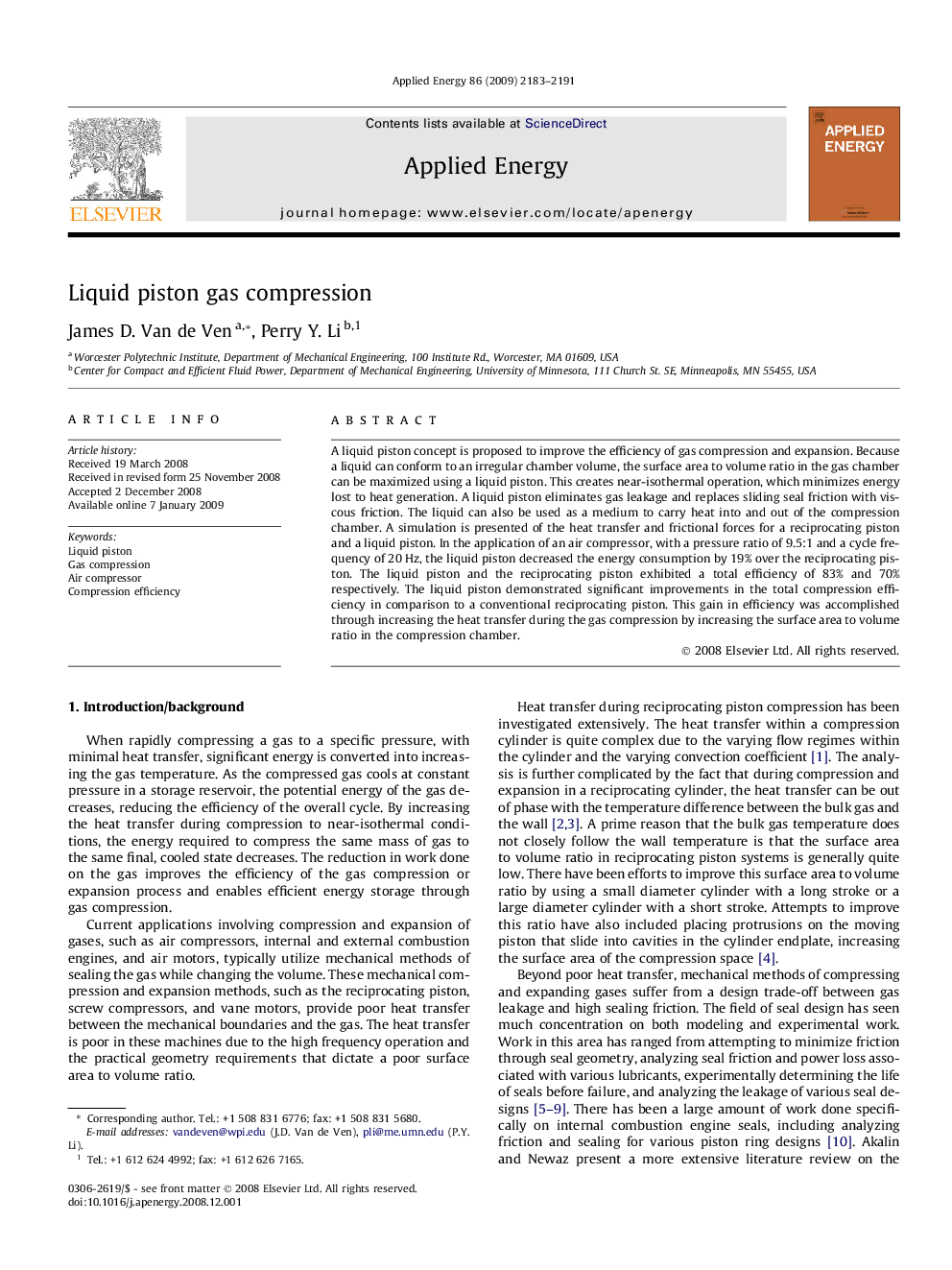| Article ID | Journal | Published Year | Pages | File Type |
|---|---|---|---|---|
| 245003 | Applied Energy | 2009 | 9 Pages |
A liquid piston concept is proposed to improve the efficiency of gas compression and expansion. Because a liquid can conform to an irregular chamber volume, the surface area to volume ratio in the gas chamber can be maximized using a liquid piston. This creates near-isothermal operation, which minimizes energy lost to heat generation. A liquid piston eliminates gas leakage and replaces sliding seal friction with viscous friction. The liquid can also be used as a medium to carry heat into and out of the compression chamber. A simulation is presented of the heat transfer and frictional forces for a reciprocating piston and a liquid piston. In the application of an air compressor, with a pressure ratio of 9.5:1 and a cycle frequency of 20 Hz, the liquid piston decreased the energy consumption by 19% over the reciprocating piston. The liquid piston and the reciprocating piston exhibited a total efficiency of 83% and 70% respectively. The liquid piston demonstrated significant improvements in the total compression efficiency in comparison to a conventional reciprocating piston. This gain in efficiency was accomplished through increasing the heat transfer during the gas compression by increasing the surface area to volume ratio in the compression chamber.
